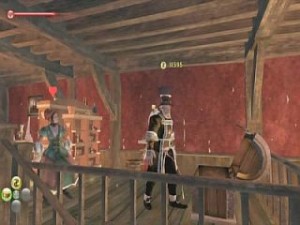 I’ve been holed up for nearly a week in the wake of Seattle Snowpocalypse 2008. Unexpectedly, with all the other things I could be doing, my best friend was one that sat on my shelf for nearly two months… Fable II. Over the past few days I’ve put a whole lot of hours into my mostly-good-with-occasional-bouts-of-greed-or-deviance character. My wife Sandi’s done the same with hers. Strangely we haven’t tried coop because we’re usually off doing small things that would drive the other crazy… Her with her ownership of pubs and fruit stands, and me taking on every single bounty hunter mission and finding every last gargoyle.
I’ve been holed up for nearly a week in the wake of Seattle Snowpocalypse 2008. Unexpectedly, with all the other things I could be doing, my best friend was one that sat on my shelf for nearly two months… Fable II. Over the past few days I’ve put a whole lot of hours into my mostly-good-with-occasional-bouts-of-greed-or-deviance character. My wife Sandi’s done the same with hers. Strangely we haven’t tried coop because we’re usually off doing small things that would drive the other crazy… Her with her ownership of pubs and fruit stands, and me taking on every single bounty hunter mission and finding every last gargoyle.
In all Fable II is a fun fantasy romp. Being one who enjoyed the first Fable more than most, I wasn’t particularly surprised. “Big concepts” like property ownership and marriage aside, there’s something comfortable to me about slipping into the newest fantasy RPG.
That even includes some very “cliched” concepts. You grow to expect them, even get mad when they don’t materialize… In action movies it’s the cars that explode after any collision, the bullets that knock people ten feet backwards, or the trusted mentor who’s been behind the plot the whole time. Fantasy games’ve got plenty of ’em, and I don’t mind one bit:
- Stealing from people’s houses.  RPG’s have had a long tradition of ordinary citizens of keeping awesome loot stored in their bedrooms, frequently even in prominent chests. While Oblivion made a point of scolding you for stealing just about anything, I feel cheated if I know my in-game neighbor has some incredible bauble sitting on his bedstand. While I usually don’t choose “thief” as an occupation, I can get obsessed with the idea of taking it without getting caught…  Luckily Fable II only considers taking items from dressers or bookshelves to be actual theft. Anybody that puts their belongings in a huge, gilded chest apparently deserves to forfeit them to the next hero that comes by. As it should be!
- Dead-end jackpots. If I’m winding my way through a dungeon and find a side passage, I just have to go down it to see what’s there. And once I reach the end, I look around to find my prize. I’ve been playing/making games long enough to know that real-estate is at a premium. Someone made this nook for a reason… now where’s my loot? Games that don’t reward my obsessive exploring properly can leave me feeling betrayed. God, I’d probably get a brain hemorrhage if I ever tried to play Pathologic.  (“You will not find a loaf of bread at the back of the cave. You’ll find a stone wall at the back of the cave, because it’s a fucking cave.”)
 Treasure hidden behind waterfalls. If years of gaming (and the occasional movie) have taught me anything, it’s that when there’s a waterfall, there’s gotta be a secret cave behind it. For a while there it was the rule rather than the exception. Even though I’ve done it a thousand times, I still feel a bit clever when I step behind the rushing water to find a nook that houses a chest full of glittering gold. When I brave the falls and find only a rock cliff wall, it’s a fair disappointment. There’s a bit of comfort in the fantasy that all waterfalls in the world might conceal a secret or two…
Treasure hidden behind waterfalls. If years of gaming (and the occasional movie) have taught me anything, it’s that when there’s a waterfall, there’s gotta be a secret cave behind it. For a while there it was the rule rather than the exception. Even though I’ve done it a thousand times, I still feel a bit clever when I step behind the rushing water to find a nook that houses a chest full of glittering gold. When I brave the falls and find only a rock cliff wall, it’s a fair disappointment. There’s a bit of comfort in the fantasy that all waterfalls in the world might conceal a secret or two…
 Special Bonus Cliche: Pirate Ghosts! Zelda, Mario, Oblivion, Final Fantasy, City of Heroes, Alone in the Dark… Man, games just love those ghost pirates… It may just be the fact that they are humanoid-yet-supernatural enemies (which can make them easy to create the assets for) that can attack the player en-masse, but they seem to show up in side-quests in a ton of games, even though they’re rarely the main focus. And who can blame them? Wrecked ships to wander around, distinctive garb and speech, and promises of a hidden treasure to be unearthed… Irresistible, I tell you, for gamers and designers alike!
Special Bonus Cliche: Pirate Ghosts! Zelda, Mario, Oblivion, Final Fantasy, City of Heroes, Alone in the Dark… Man, games just love those ghost pirates… It may just be the fact that they are humanoid-yet-supernatural enemies (which can make them easy to create the assets for) that can attack the player en-masse, but they seem to show up in side-quests in a ton of games, even though they’re rarely the main focus. And who can blame them? Wrecked ships to wander around, distinctive garb and speech, and promises of a hidden treasure to be unearthed… Irresistible, I tell you, for gamers and designers alike!


 Last week I got a nagging feeling that I needed to catch up on some of the latest games I’d played and enjoyed Grand Theft Auto IV, as well as some other open-world and RPG titles, but occasionally there is a “huge” title that I just plain miss. This fall was a busy time… while I’d played Bioshock and some (but not enough) of Assassin’s Creed and Mass Effect, I’d completely breezed by Halo 3. As a long-time shooter fan/developer I figured I owed it to myself to put in a few hours and catch up with what’s held up as state-of-the-art.
Last week I got a nagging feeling that I needed to catch up on some of the latest games I’d played and enjoyed Grand Theft Auto IV, as well as some other open-world and RPG titles, but occasionally there is a “huge” title that I just plain miss. This fall was a busy time… while I’d played Bioshock and some (but not enough) of Assassin’s Creed and Mass Effect, I’d completely breezed by Halo 3. As a long-time shooter fan/developer I figured I owed it to myself to put in a few hours and catch up with what’s held up as state-of-the-art.

 With all the
With all the  The above list may sound a bit simplistic…
The above list may sound a bit simplistic…  Enormous games like open-world titles can be the toughest to nail down. They are inherently about breadth… If you added all the micro-activities in
Enormous games like open-world titles can be the toughest to nail down. They are inherently about breadth… If you added all the micro-activities in 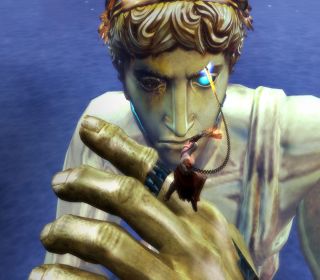 Again, Pillar Values should be so strongly executed that they should be obvious in a game’s execution. It’s easy to tell what some of them were on successful games:
Again, Pillar Values should be so strongly executed that they should be obvious in a game’s execution. It’s easy to tell what some of them were on successful games: Cuts happen, and they happen constantly throughout a project… They are driven by producers working to fit the project to a schedule, by artists or audio people who are asked to generate too many assets, or by programmers who must trim down an overambitious technical plan. They are a required part of a game reaching completion, and since a game that doesn’t ship is a guaranteed failure, it’s worth accepting cuts for the opportunity they can provide.
Cuts happen, and they happen constantly throughout a project… They are driven by producers working to fit the project to a schedule, by artists or audio people who are asked to generate too many assets, or by programmers who must trim down an overambitious technical plan. They are a required part of a game reaching completion, and since a game that doesn’t ship is a guaranteed failure, it’s worth accepting cuts for the opportunity they can provide.

 Is it worth the cost of entry? In a technically challenging project, it can be valuable to take an “all or nothing” stance on some features… When you implement a small feature, you are still creating new tasks for multiple team members, communicating objectives and checking on progress. There’s a start-up cost for something “new” that can be significant, even for something very light on technology or polish. Can that feature be filled out to be a more significant addition to the game experience? If not, sometimes that small feature is not worth the investment… and a game full of lots of tiny half-hearted features is rarely better than fewer, stronger, more robust features. A similar notion is that if it’s worth putting in the game, it’s worth making it good.
Is it worth the cost of entry? In a technically challenging project, it can be valuable to take an “all or nothing” stance on some features… When you implement a small feature, you are still creating new tasks for multiple team members, communicating objectives and checking on progress. There’s a start-up cost for something “new” that can be significant, even for something very light on technology or polish. Can that feature be filled out to be a more significant addition to the game experience? If not, sometimes that small feature is not worth the investment… and a game full of lots of tiny half-hearted features is rarely better than fewer, stronger, more robust features. A similar notion is that if it’s worth putting in the game, it’s worth making it good.
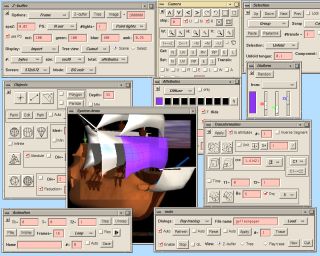 Everybody wants their game, whether the one they’re making or the one they’re playing, to be jam-packed to the gills with stuff. Why? Well, features just make everything seem cooler. A gamer feels like they are getting better value for their dollar… and extra bullet points on the back of the box makes everyone happier.
Everybody wants their game, whether the one they’re making or the one they’re playing, to be jam-packed to the gills with stuff. Why? Well, features just make everything seem cooler. A gamer feels like they are getting better value for their dollar… and extra bullet points on the back of the box makes everyone happier. How about
How about  As I play
As I play 
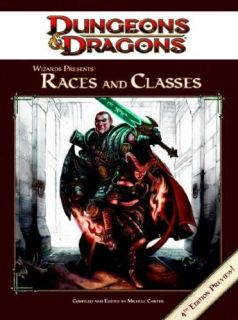 If you are someone who follows game design (and if not, what are you doing here?), you should consider looking at the
If you are someone who follows game design (and if not, what are you doing here?), you should consider looking at the 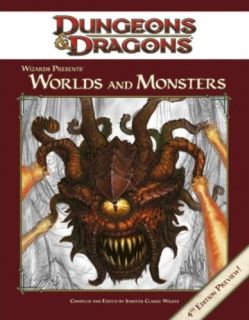 In low-levels, you have very little hit points that cause you to rather easily perish… This makes it extremely challenging for a DM to challenge the group without risking that one of them will just fall over dead on a bad run of die rolls. Plus first-level characters just don’t have any options other than “blast the thingâ€.
In low-levels, you have very little hit points that cause you to rather easily perish… This makes it extremely challenging for a DM to challenge the group without risking that one of them will just fall over dead on a bad run of die rolls. Plus first-level characters just don’t have any options other than “blast the thingâ€. Of course that was okay! They were forging new territory… While Ultima Online was the first large-scale success in the online space, with Everquest it got even more widely-accepted… and new gamers were still enamored with this persistent multiplayer combat-and-socialization model and discovering what they enjoyed doing. If people found, say, staking their virtual claim on a small collection of huts, systematically killing every orc that appeared there to be effective (that is,Â
Of course that was okay! They were forging new territory… While Ultima Online was the first large-scale success in the online space, with Everquest it got even more widely-accepted… and new gamers were still enamored with this persistent multiplayer combat-and-socialization model and discovering what they enjoyed doing. If people found, say, staking their virtual claim on a small collection of huts, systematically killing every orc that appeared there to be effective (that is,  A bit of history on this, I wrote it while I was in the midst of a job search. They had asked for an analysis of this sort for one of several games, including my fave,
A bit of history on this, I wrote it while I was in the midst of a job search. They had asked for an analysis of this sort for one of several games, including my fave,  In the case of X-Men, there were a few things that dawned on me too late to really get into the design. The first was a smaller realization… For a good chunk of development we were looking for solid gameplay elements that took advantage of the various forms of elemental attacks that the X-Men used… Typically it was difficult because it was custom-scripted, and generally required one specific hero at the expense of all others in order to enact, which went up against our credo of letting the player choose their favorite X-Men and focus on them. However, after
In the case of X-Men, there were a few things that dawned on me too late to really get into the design. The first was a smaller realization… For a good chunk of development we were looking for solid gameplay elements that took advantage of the various forms of elemental attacks that the X-Men used… Typically it was difficult because it was custom-scripted, and generally required one specific hero at the expense of all others in order to enact, which went up against our credo of letting the player choose their favorite X-Men and focus on them. However, after